By adding text wildcards to the page header.
Has this ever happened to you?
You’ve been keeping your orchestra music in the same folder all year. You receive the final concert running order, and you rearrange the folder. You put the final item in…
…and find a page left over.
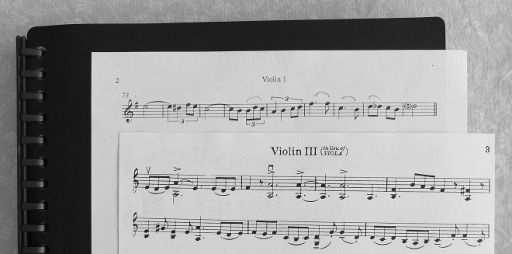
Which pages 1 and 2 does this page 3 belong to?
Sometimes the typesetting makes it easy to find. However, it’s increasingly common to see music formatted in Opus Std, with text in Times New Roman. That means it was notated in Sibelius… like a dozen other pieces this year.
If you find this happening to you, or to people who use your Sibelius files, you need to format them with all the information needed to put them back together:
- Title
- Instrument
- Page number
- Revision date
Why do my parts display their names, but the score doesn’t?
When I create a new orchestra score, the page headers usually say “Full Score”. However, they are greyed out, indicating that they are hidden. This text is visible in the parts, indicating the header is set to “Show in Parts”. Fix this by right-clicking (or control-clicking) on the “Full Score” text, and setting it to “Show in All”.
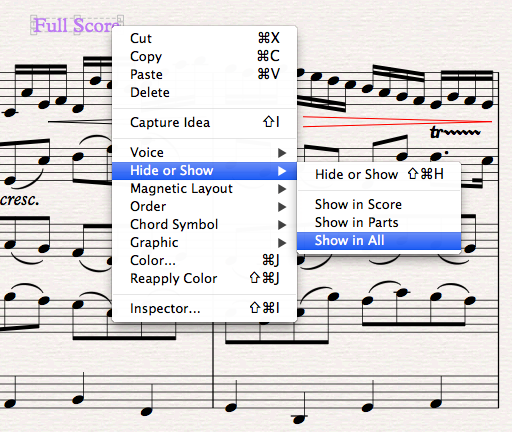
Setting the header to “Show in All”
Who is \$HEADERPARTNAME\?
You may have tried to edit this header text, and found that it suddenly changed from “Full Score” to “\$HEADERPARTNAME\” (or something similar, like “\$PARTNAME\”).
This is one of the many Wildcards that Sibelius allows. Type it (including the dollar sign and backslashes) anywhere, and when you stop editing it will turn into the name of the current part.
Can I just type in front of the wildcard?
You can indeed manually enter the title of the piece, or any other identifying information you want. Include a dash, colon, or some other separator to make the title text distinct from the part name.

Manual typing in the header
However, there is a more elegant way to handle this. One of the other wildcards Sibelius supports is “\$TITLE\”. Make your header something like “\$TITLE\ – \$HEADERPARTNAME\”, and it will use the title from your document information.
The title in your document information is not automatically the title written in big letters on the first page. To view or change this information, go to the “File” tab and select “Info”. (For Sibelius 6 and earlier, go to the “File” menu and select “Score Info…”.)
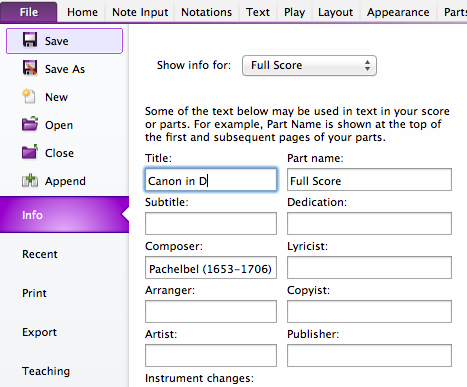
Editing File Info in Sibelius 7
To avoid typing this information in two places, I edit the large text at the top of my document to be all wildcards.
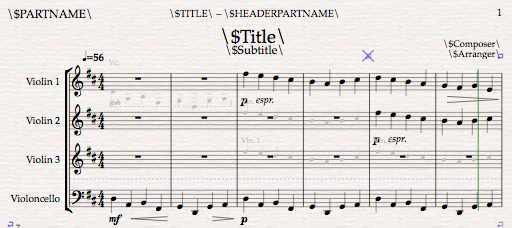
Wildcards used to retrieve information from the document information fields
Should I edit my music to use wildcard titles?
I like knowing that my document information is defined in a single place, but it can be confusing.
Also, you cannot use wildcards if the wildcard text includes formatting on specific words or characters. For example, I have a piece titled “Turbinia (1897)”. Because the italics only apply to the ship named Turbinia, I manually typed and formatted the title text.
Revision dates
I also like to add “Revised \$FileDate\” to the copyright statement on the first page. This means that, if I edit a piece and print updated copies, people can tell which version to discard.
This is almost equivalent to printing with “Date and time footer” enabled, if your preferences say to “Use date of: Last save”. However, I keep forgetting to check the relevant box.
By default, Sibelius formats dates to the nearest minute. If you would prefer that your lecturer not know that your composition assignment was completed at 2:38am, you may change the date format in your Sibelius preferences. Select “Files”, find the “Print Date and Time Footer” box and change the “Format”. This affects date wildcards as well as footers.
\$FileDate\ wildcard in use
If you want your copyright block to appear on every single pages, edit the text style for “Copyright” to “Repeat on” “All pages”. I don’t do this, as my usual copyright block contains the Creative Commons statement, making it three lines long. It seems obnoxious to stick that on every page.
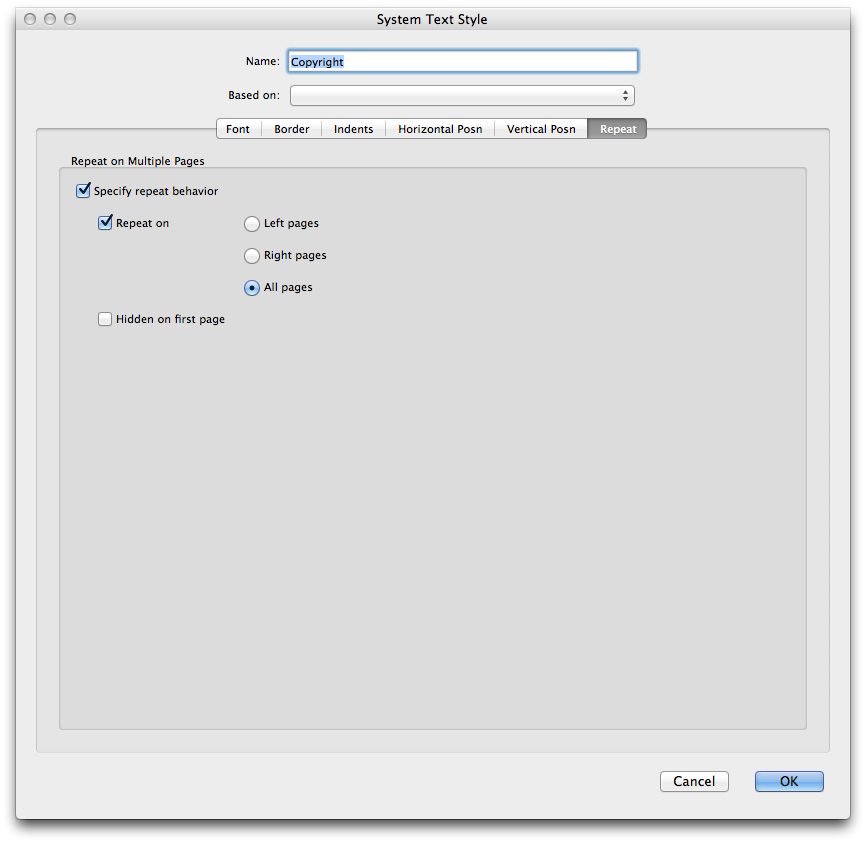
Setting the “Copyright” text style to repeat on all pages
What else can I do with wildcards?
Maybe there are a dozen other pieces titled “Canon in D” in your repertoire. If so, you should add the composer name to the header: “\$COMPOSER\ – \$TITLE\ – \$HEADERPARTNAME\”.

Header with composer name added
For a more comprehensive look at wildcards and their uses, see Sibelius Blog – Unleash the power of text wildcards.
